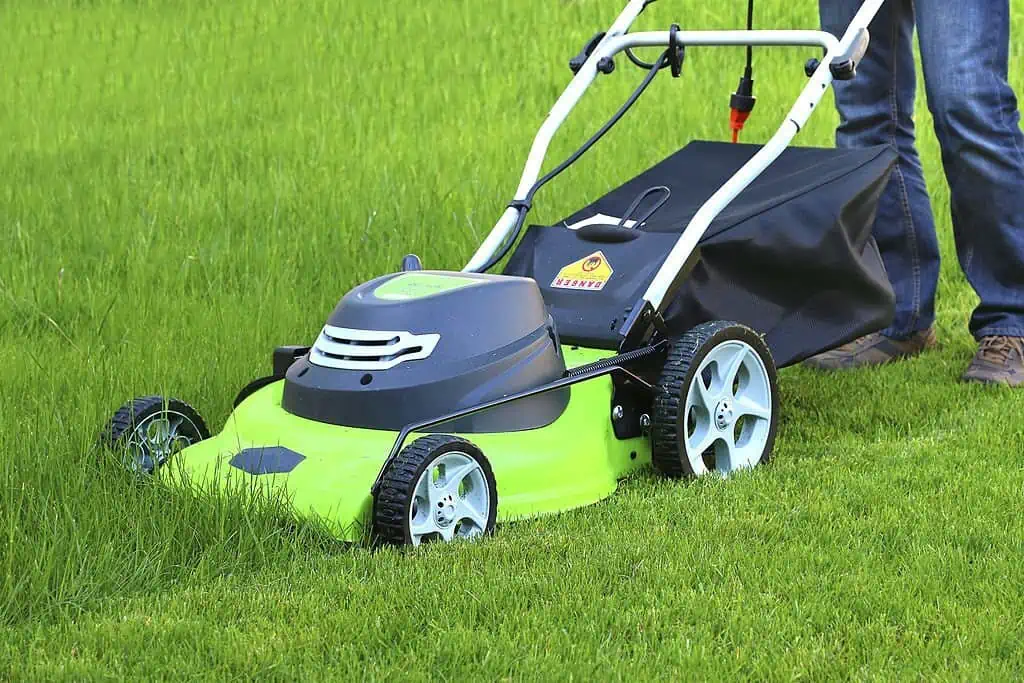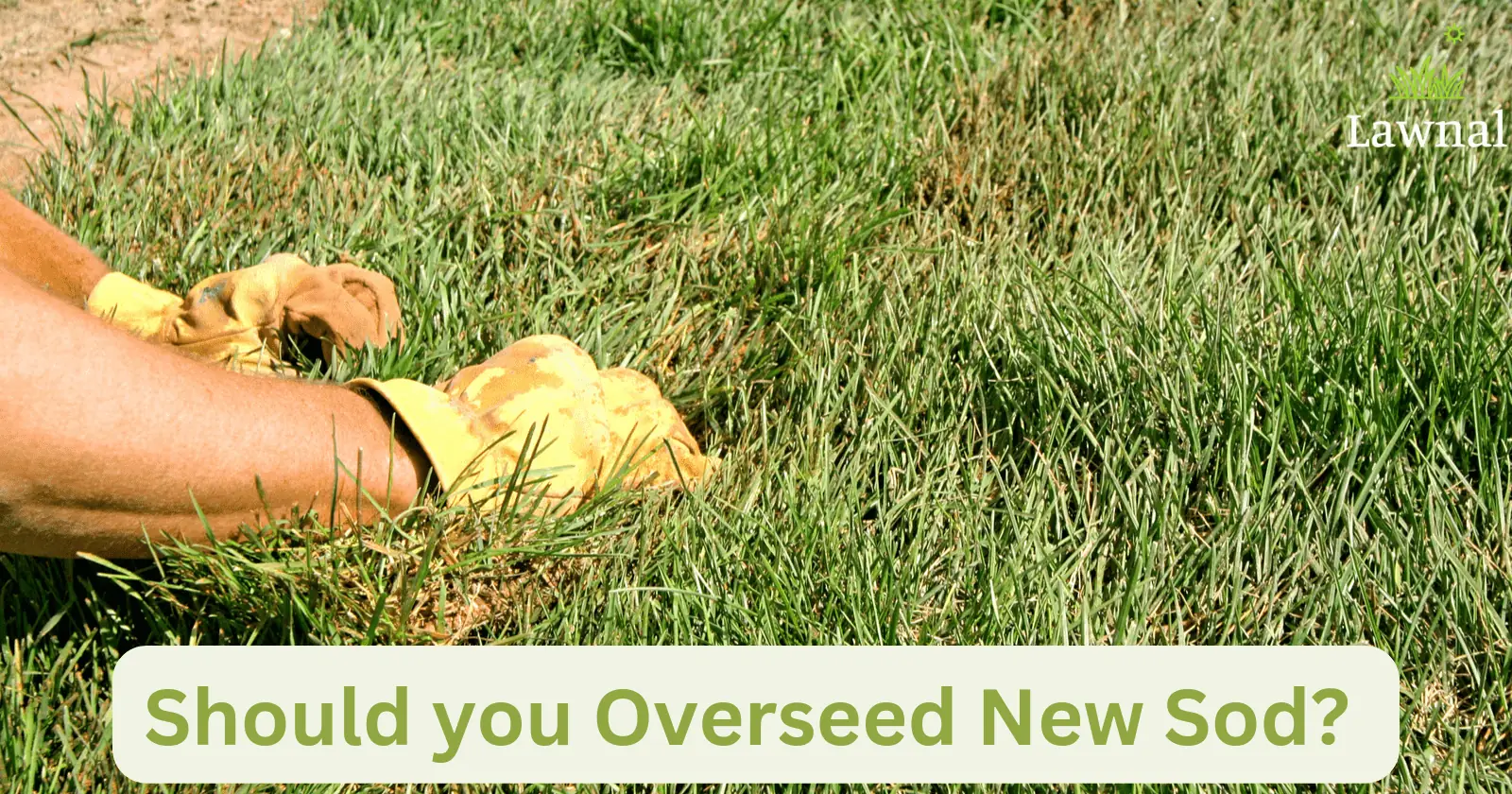If you intend to seed your lawn, you might wonder whether removing the dead grass before planting is necessary. While getting rid of all the old growth could seem like a good idea, It’s essential to consider its advantages and disadvantages.
One of the justifications for raking up the dead grass is that it can enhance seed-to-soil contact, and It will be easier for the fresh seeds to germinate if the old grass and any other waste are cleared away.
Raking up dead grass before planting will ultimately depend on various factors, including the condition of your lawn, the type of seed you are using, and your personal preferences.
In this article, you will learn about the pros and drawbacks of raking dead grass before seeding to make an informed choice.
Should Dead Grass be Raked Before Seeding?
Yes, you should rake dead grass before seeding it because allowing the dead grass to accumulate weakens the surrounding grass and will result in even more of it dying.
Therefore, getting rid of it is crucial. Any areas of your lawn with more than a half inch of dead grass should be removed before planting the new seed, especially if you are planting grass.
Pros of Raking Dead Seed Before Seeding
The followings are the advantages of raking dead seed before seeding.
1. Enhanced Soil Contact
Raking dead grass before planting has several advantages, including improved soil contact; therefore, you create a blank slate for the new seedlings to develop when you remove dead grass. It’s more likely that the seeds will make good contact with the soil and be able to establish themselves if there are no obstacles between them and the soil.
The seeds will most likely fall on top of the dead grass if you don’t remove it before seeding, which can form a barrier between the seed and the soil because the seed won’t come into contact with the soil directly, preventing it from germinating.
Dead grass can also accumulate thatch, which can prevent the soil from absorbing water and nutrients and hinder the ability of seedlings to establish roots.
2. Reduces Thatch Accumulation
Dead grass accumulated on the soil’s surface is known as thatch. A little bit of thatch can assist the lawn in retaining moisture and controlling soil temperature; however, too much of it can be bad for the grass. It can make it difficult for seedlings to develop roots and prevent water and nutrients from reaching the soil.
You can lessen thatch in your lawn and enhance its general health by raking dead grass before sowing. The new seedlings will benefit from a healthier growing area and more significant water and nutrient absorption.
3. Improves Soil Health
Raking dead grass before seeding can help benefit the general health of your soil. Because organic matter, such as that found in dead grass, is good for the soil. Organic matter will strengthen the structure of the soil, boost water retention, and encourage good microbial activity. You eliminate this supply of organic stuff from your lawn when you remove dead grass.
It’s crucial to remember that not all of the dead grass on your lawn needs to be pulled up. A tiny amount of thatch can be advantageous because it helps control soil temperature and aids in retaining moisture.
Ensure you balance cutting dead grass to encourage healthy seed-to-soil contact and leaving just enough to benefit the soil.
Drawbacks Associated with Removing Dead Grass Before Seeding
Raking dead grass before seeding can be an easy and efficient way to prepare for your lawn; however, you should be aware of several disadvantages to this approach.
Soil Erosion
The top layer of soil is removed when you rake the dead grass. As a result, the soil will be vulnerable to wind and water erosion, which can result in soil loss and nutrient depletion. Your lawn can develop uneven sections due to soil erosion, which can be challenging to seed and manage.
Damage to Existing Grass
Raking dead grass will effectively harm your lawn’s healthy vegetation. The rake can remove dead grass and healthy grass, leaving your bare lawn spots. These bare areas might grow weeds and other undesirable plants, fighting with your new grass for water and nutrients.
Increased Growth of Weeds
Raking dead grass before seeding has the disadvantage of promoting weed growth in your lawn. You leave areas in your lawn that are easy for weeds to colonize by removing the dead grass.
The health and attractiveness of your lawn will suffer as a result, and weed growth will also rise.
Time-Consuming
It can take a while to rake dead grass before seeding. That could take hours or even days, depending on the size of your grass. This will require a significant time and energy commitment, especially if you must also complete other lawn care duties.
Inadequate Effectiveness
Finally, raking dead grass before sowing will be less beneficial. While clearing your lawn of dead grass and thatch can be helpful, more is needed to foster the best conditions for your new grass to develop.
What’s more, other elements like soil pH, nitrogen levels, and moisture content can also influence the development of your fresh grass.
Alternatives of Raking Dead Grass
Nevertheless, various alternatives to raking dead grass before planting will assist you in getting a healthy, green lawn without the disadvantages of this method.
Mowing

The easiest and most efficient technique to remove dead grass before sowing is to mow your lawn. Shortening the grass makes it simple to see bare patches or areas requiring reseeding.
Mowing can also assist in breaking up any clumps of dead grass or other debris, allowing the soil to breathe more freely. It’s crucial to remember that you should only mow your lawn short since this can damage the grass and make it harder for the new seeds to take root.
Aeration

The soil must be aerated to allow air, water, and nutrients to reach the roots of your grass; however, a machine or a manual aerator can do this. Aeration boosts your lawn’s general health in addition to helping to prepare the soil for seeding.
Further, aeration encourages your grass roots to grow deeper and more vital by minimizing soil compaction, which leads to a thicker, healthier lawn. Additionally, by eliminating small plugs of soil, aeration can also aid in breaking up dead grass and other residues, making it simpler for new seeds to take root.
Dethatching

The dethatching process involves clearing the soil’s surface of the layer of dead grass and other debris accumulated over time. Thatch is a covering that can block the roots of your grass from receiving water, air, and nutrients; however, dethatching can be accomplished with a mechanical or a human thatching rake.
Remove the thatch layer from the area to make germination easier for your new grass seeds. Dethatching should be done moderately, though, since this could harm the current grass and make it more difficult for the new seeds to germinate.
Conclusion
Overall, the situation will determine whether or not you should rake dead grass before seeding new grass. Raking the soil before planting is optional if the thatch layer is less than half an inch thick.
However, removing the dead grass before seeding new seeds is crucial if the thatch layer is more significant than half an inch thick. By doing this, the fresh grass will have access to the soil and nutrients it requires to grow.
Moreover, raking dead grass is crucial as it helps improve soil air and water circulation, especially in regions with lots of foot activity or compacted soil. The risk of disease and pests in your lawn is also reduced by removing dead grass.
Now that you know this, it’s crucial to evaluate the state of your lawn and the depth of the thatch layer before raking.






